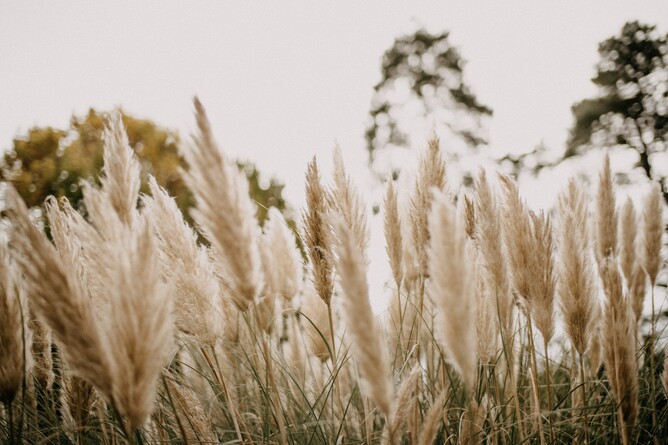This is a bit of a controversial topic because pampas grass is so popular! Yes, it looks beautiful and gives off dreamy boho vibes but most people are genuinely unaware of the risk it poses to our native bushland, wetlands and wildlife. Let's explore why it is so dangerous to our natural ecosystems and why you should reconsider using it at your wedding.
Originating in South America, Pampas grass (Cortaderia selloana) is a tussocky perennial weed that can grow up to 4 metres high with roots of up to 3.5 metres deep. They prefer open, sunny locations which receive additional moisture so you will often find them infesting mangroves, riverbanks, heathlands, lakes and swampy areas.
Pampas grass is considered a Pest Plant under the Agriculture and Related Resources Protection Act 1976 and therefore documented control strategies are in place. These noxious weeds have very hardy root systems making them extremely difficult to remove once established. Digging larger plants up by hand is near impossible so heavy machinery is often required or the application of a highly toxic glyphosate-based herbicide.
But this is where things get really grim. According to the Urban Bushland Council WA, Pampas grass is "capable of altering vegetation structure and decreasing biodiversity of invertebrate and vertebrate fauna". Translation; pampas grass is outcompeting native plants and displacing native wildlife. Its long leaves have finely sedated edges which are extremely sharp making them highly undesirable as food and shelter for birds and other native wildlife. They are also a fire hazard and a safe haven for foxes, rabbits and other vermin.
Pampas grass is highly invasive and spreads via seed and rhizomes (spreading of underground roots). The feathery, attractive plumes that are so popular at weddings can hold up to 100,00 seeds per plume and winds can carry these seeds anywhere within a 25 kilometre radius. So consider this. Say you use just 10 plumes at your wedding, that is 1 million seeds that you are introducing into the area. 1 million seeds that are endangering national parks, bushland, farms, rural properties, parks, gardens, forests and the surrounding areas.
I have worked with pampas grass at weddings in the past as I was also once oblivious to the harm they cause to native habitats. But since learning of the threat they pose, I now unapologetically refuse to work with them and I hope to inspire others to also turn away from this popular trend.
Photo Credit
Annie Spratt via Unsplash
